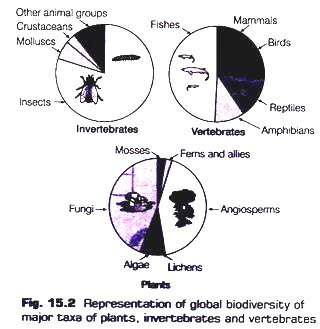Photosynthesis in prokaryotic organisms occurs in lamellar membrane systems called chromatophores. The chromatophores contain the pigments for the photochemical reactions but none of the subsequent biosynthetic enzymes.
The pigment system includes the chlorophylls, carotenoids, and in some cases phycobilins.
However, in the purple and green bacteria, bacteriochlorophyll is the ultimate light-trapping molecule (not chlorophyll a). Only the cyanobacteria have chlorophyll a.
The most important distinction between plant and bacterial photosynthesis is that water is not used as the reducing agent and oxygen is not an end product. The power to reduce CO2 may come from molecular hydrogen, H2S, or organic compounds. Two major groups of bacteria that carry out photosynthesis are the green and purple sulfur bacteria; these organisms utilize H2S and produce sulfur and sulfate, that is,
During photosynthesis, sulfur accumulates as granules of elemental sulfur and may be further metabolized later. Non-sulfur purple bacteria use organic compounds such as acetic acid as electron donors. The acetic acid is anaerobically oxidized via the Krebs cycle reactions. Acetic acid can also be reduced to hydroxybutyric acid. Certain members of the sulfur and non-sulfur purple bacteria can use molecular hydrogen to reduce either C02 or acetic acid, that is,
Other Plastids:
The chloroplast is only one of several different plastids found in plant cells. Other plastids, such as etioplasts, amyloplasts, and chromoplasts, have different structures (Fig. 17-21) and functions. They are all called plastids because they appear to develop from a common structure or from one another.
Proplastids are small, generally colorless structures found in young or dividing cells. They have little internal structure but are delimited at their surface by a double membrane. Proplastids give rise to other types of plastids. Etioplasts are prevalent in the leaves of plants that are grown in the dark. Their ellipsoidal and sometimes irregular structure is also delimited by a double membrane.
Internally, etioplasts contain one or more paracrystalline prolamellar bodies (Fig. 17-21a) and a number of flattened vesicles called primary thylakoids. Etioplasts develop into chloroplasts on exposure to light. The outer membrane of the amyloplast encloses the stroma and contains one to eight starch granules. In certain plant tissues such as the potato tuber, the starch granules within the amyloplasts may become so large that they rupture the encasing membrane. Starch granules of amyloplasts are typically composed of concentric layers of starch.
Chromoplasts contain carotenoids and are responsible for imparting color (e.g., yellow, orange, and red) to certain portions of plants such as flower petals, fruit, and some roots. The chromoplasts of carrots contain large quantities of lipid that reduce their overall density to less than 1.0; consequently, during centrifugation of root homogenates, the amyloplasts rise to the surface of the centrifuge tube.
Chromoplast structure is quite diverse; they may be round, ellipsoidal, or even needle-shaped, and the carotenoids that they contain may be localized in droplets or in crystalline structures. The function of the chromoplast is not clear, but in many cases (e.g., flowers and fruit) the color that they produce probably plays a role in attracting insects and other animals for pollination or seed dispersal. A number of other, less frequently occurring plastids have been described, such as the oil-filled elaioplasts including the sterol-rich sterinochloroplasts, and the protein-containing proteoplasts.


